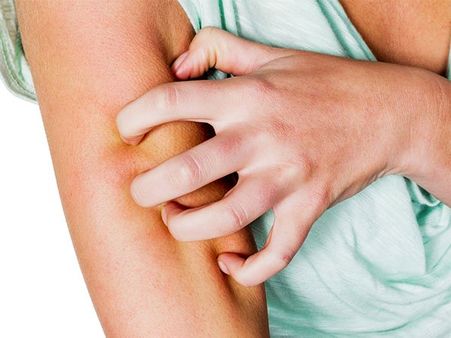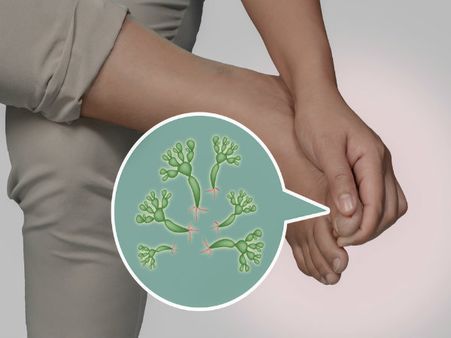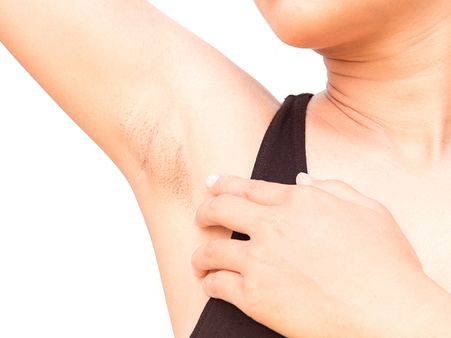Just In
- 3 hrs ago

- 4 hrs ago

- 7 hrs ago

- 7 hrs ago

Don't Miss
- News
 PM Shehbaz Sharif Voices Concern Over Bangladesh's Economic Progress Amid Pakistan's Challenges
PM Shehbaz Sharif Voices Concern Over Bangladesh's Economic Progress Amid Pakistan's Challenges - Movies
 Maidaan Vs BMCM Clash: Bollywood Suffers XXX Cr Loss On A Single Friday? HERE's What We Know
Maidaan Vs BMCM Clash: Bollywood Suffers XXX Cr Loss On A Single Friday? HERE's What We Know - Sports
 'RCB have won just one game but Orange Cap on his head': Anjum Chopra backs Virat Kohli to open in T20 World Cup
'RCB have won just one game but Orange Cap on his head': Anjum Chopra backs Virat Kohli to open in T20 World Cup - Technology
 Elon Musk’s X Is Launching a TV App Similar to YouTube for Watching Videos
Elon Musk’s X Is Launching a TV App Similar to YouTube for Watching Videos - Education
 AICTE introduces career portal for 3 million students, offering fully-sponsored trip to Silicon Valley
AICTE introduces career portal for 3 million students, offering fully-sponsored trip to Silicon Valley - Finance
 Rs 7.50/Share Dividend: Adani Group Cement Company Reports Strong Q4 Results; Profit Surges 2x YoY
Rs 7.50/Share Dividend: Adani Group Cement Company Reports Strong Q4 Results; Profit Surges 2x YoY - Automobiles
 Bajaj To Offer Chetak Electric Scooter At Lower Price Point: All Details Here
Bajaj To Offer Chetak Electric Scooter At Lower Price Point: All Details Here - Travel
 Escape to Kalimpong, Gangtok, and Darjeeling with IRCTC's Tour Package; Check Itinerary
Escape to Kalimpong, Gangtok, and Darjeeling with IRCTC's Tour Package; Check Itinerary
Intertrigo (Inflammation Of Skin Folds): Causes, Symptoms, Risk Factors, Treatments And Prevention
Intertrigo is the inflammation of the skin that affects mainly the skin folds causing rashes, itching, burning and infections. They are caused by friction, heat, moisture buildup and lack of circulation in the folds of the skin causing erosion of the top-most layer of the skin, leading to intertrigo. [1]
This skin-to-skin friction probably happens in moist and warm skin folds such as protruding stomach, breast folds, between the buttocks, armpits or groin. It is common in people with obesity, diabetes and also in toddlers due to diaper use. Take a look at the details.


Causes Of Intertrigo
The most common cause of intertrigo is moisture and friction. Prolonged friction between the skin areas, increased temperature and sweating cause the skin to breakdown or get irritated resulting in intertrigo. It is usually a common skin condition that goes away when sweating or moisture buildup in the skin folds is controlled. [2]
Intertrigo gets severe when microbes such as bacteria, fungi or yeast overgrow in those areas as the warmth and moisture provide an ideal condition. They enter the skin through the cracked or peeled skin and cause infections.
Other skin conditions like psoriasis or pemphigus (causes due to abnormal functioning of the immune system) can also be the cause of intertrigo. People who wear braces or splints are also at an increased risk of the condition.


Symptoms Of Intertrigo
- Itching, mostly during nights. It is the main cause of the breakdown of the skin.
- Redness and rashes [3]
- Burning or stinging sensation
- Foul odour (due to microbial infection)
- Pain
- Cracked or peeled skin
- Bleeding in the skin


Risk Factors Of Intertrigo
- Being diabetic [4]
- Being obese or having multiple skin folds due to obesity
- Smoking or drinking alcohol
- Staying in extremely humid or hot temperature
- Excessive sweating
- Poor hygiene [1]
- Tight-fitting dresses
- Malnutrition
- Diaper use [5]
- Occupation that causes excessive sweating (the main cause of groin and toe intertrigo)


Complications Of Intertrigo
Untreated intertrigo can cause complications such as:
- Secondary bacterial infections caused due to gram-positive bacteria [6]
- Yeast infection (Candidal intertrigo)
- Nausea or fever.


Diagnosis Of Intertrigo
- Physical examination: It can easily be identified by a dermatologist just by looking at the rashes followed by a series of questions such as any pre-existing medical condition, the temperature in the area where the person resides and many more.
- Laboratory testing: If the medical expert suspects an infection, a lab test is suggested to find out the type of infection for related treatment.

Treatment Of Intertrigo
Intertrigo usually goes on its own when the risk factors related to the condition are controlled or prevented. [7] Common treatment methods include:
- Topical creams or gels: To control itching, rashes and redness.
- Antiperspirants: It includes creams or powder to control excessive sweating.
- Topical antibiotics or antifungal drugs: It includes creams or ointments to treat the infection.
- Expert advice: To lose weight or to wear clothes that easily allow sweat to evaporate.

How To Prevent Intertrigo
- Avoid wearing tight-fitting clothes or shoes for a longer period.
- Reduce weight and if you are a diabetic, make sure your glucose levels are well-controlled.
- Change lifestyle habits such as smoking or drinking alcohol.
- Maintain personal hygiene; bath daily or keep the areas of your body which have more fat buildup or are folded clean.
- Avoid scratching the area due to itching as it causes the skin to breakout, thus allowing the entry of microbes. Use prescribed powder or creams to reduce itching and other symptoms.
- Avoid wearing clothes made of nylon or synthetic fibres.
- Change baby's diapers at intervals.

Common FAQs
1. How do you treat intertrigo?
Mild intertrigo goes on its own by simple methods like washing the affected areas with soap and water, keeping them dry and applying topical creams or powder. Chronic intertrigo may take two or three weeks and can be treated by antimicrobial medications (oral, powder, creams or ointments).
2. What does intertrigo smell like?
Mild forms of intertrigo usually don't smell but when it gets chronic due to infection by microbes such as bacteria, fungi or yeast, a foul smell is produced.
3. Can intertrigo spread?
No, intertrigo is not contagious from one person to another. However, if a person has an infection due to intertrigo in one part of the skin, it may get spread to other areas of the body, if left untreated for long.
-
 wellnessHow To Treat Intertrigo: Safe And Effective Home Remedies
wellnessHow To Treat Intertrigo: Safe And Effective Home Remedies -
 healthRare Skin Disorder Causes Skin To Peel Off 10 Times Faster In Woman; Know More About It
healthRare Skin Disorder Causes Skin To Peel Off 10 Times Faster In Woman; Know More About It -
 disorders cureNY Man Treated For Rhinophyma Or Bulbous Nose: Causes, Symptoms And Treatment Of The Condition
disorders cureNY Man Treated For Rhinophyma Or Bulbous Nose: Causes, Symptoms And Treatment Of The Condition -
 disorders cureInternational Albinism Awareness Day 2021: What Is Albinism? Causes, Symptoms And Treatments
disorders cureInternational Albinism Awareness Day 2021: What Is Albinism? Causes, Symptoms And Treatments -
 disorders cureActinic Keratosis: Causes, Symptoms, Risk Factors, Treatments And Prevention
disorders cureActinic Keratosis: Causes, Symptoms, Risk Factors, Treatments And Prevention -
 wellnessEasy And Effective Home Remedies for Melasma (Dark Patches On The Skin)
wellnessEasy And Effective Home Remedies for Melasma (Dark Patches On The Skin) -
 disorders cureMelasma (Chloasma): What Are The 6 Factors That Cause It? Symptoms, Treatments And Prevention
disorders cureMelasma (Chloasma): What Are The 6 Factors That Cause It? Symptoms, Treatments And Prevention -
 beauty7 Simple Skincare Hacks Tailored For The Busy You To Get Effortless Radiance
beauty7 Simple Skincare Hacks Tailored For The Busy You To Get Effortless Radiance -
 beauty6 Korean Beauty Tricks To Add To Your Skincare For The Ultimate Glass Skin
beauty6 Korean Beauty Tricks To Add To Your Skincare For The Ultimate Glass Skin -
 healthWhat Are Demodex Mites? These 8-Legged Creatures Live Under Skin And May Give You Creepy Vibes
healthWhat Are Demodex Mites? These 8-Legged Creatures Live Under Skin And May Give You Creepy Vibes -
 healthWhy Can't We Resist Popping Pimples? Let's Find Out Why We Derive So Much Pleasure From Them!
healthWhy Can't We Resist Popping Pimples? Let's Find Out Why We Derive So Much Pleasure From Them! -
 beautyDo This Skin Toning Trick Everyday To Get Rid Of Double Chin
beautyDo This Skin Toning Trick Everyday To Get Rid Of Double Chin


 Click it and Unblock the Notifications
Click it and Unblock the Notifications




